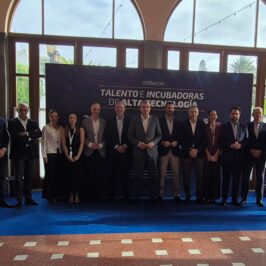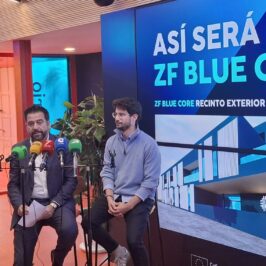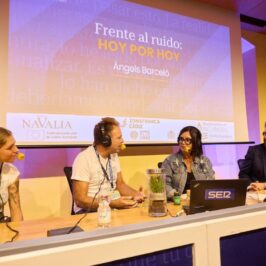The Medieval Cadiz It looked so little like the current one that He even had a trap in the Plaza de España. It is difficult to imagine tuna swimming in the place where the monument to the Constitution of 1812 stands today, but in particular four hundred Cadiz, the town barely dared to extend outside the walls of the Pópulo and its three arches, if at all it did so in a couple of arrebales located in what is today the neighborhood of Santa María or the area of San Juan closest to the church of Santiago.
But the existence of almadrabas in Cádiz is not only documented by historians from the University of Cádiz but they assure that the Marquis of Cadiz He was a key figure in the transformation of a sustainable art but very different from that labyrinth of networks embedded in the seabed that we know today. To explain that the capital of the province has as much right as localities of La Janda to claim their almadrabera history, the professors Emilio Martín and Enrique Ruiz, have written a work that has been published by Silex and is titled, The Bay of Cádiz and its traps: Natural resources, landscapes, societies, and which approaches the world of the 15th century traps in the region.

The work was presented yesterday at the hotel Olom, located in the Plaza de La Catedral, in whose restaurant you can taste an excellent tuna menu, and to give it more flavor the Conile firm Petaca Chico, which has the concession of the Barbate trap, He performed a hoarse sound carried out with his usual mastery by Ángel and narrated by Paco Malia.
During the course of the presentation, which was led by Jose Berasaluce, director of Master's Degree from the UCA, the professors highlighted that almadraba tuna fishing was born as an industry led by the Marquis of Cádiz in the historical context prior to the commercial expansion of trade that came after the discovery of America.
The researchers mapped the Bay of Cádiz and located the points where the first traps in the province were established, specifically in the city of Cádiz itself, in the cove where the Plaza de España is today, as well as in Punta Candor in Rota or in the Towers of Hércules, at the end of Cortadura beach or in Sancti Petri, Chiclana.
The biographical study of the workers hired in the almadrabas stands out, which has allowed us to know a part of their life trajectories: the shipowners from Seville, the caloneros from Portuense and Cádiz, the coopers from Jerez or the esparteros from Seville. In the same way, the assembly of the almadrabas brought together slaves brought from North Africa, prostitutes, priests or tavern keepers on the beaches of Cádiz.
The researchers have carried out rigorous work through archival, literary and graphic sources in different national documentation centers and with the cooperation of scientists from other areas of knowledge, such as geography, archaeology, anthropology or literature. The work is part of the research project Society-environment interaction in the Guadalete basin in the Middle Ages (GUADAMED), financed with FEDER funds by the Government of Andalusia and the University of Cádiz and developed at the Agustín de Horozco Seminar in the Faculty of Philosophy and Letters of Cádiz.
The main novelty of this work lies in the historical discovery of the beginning of an industrial activity, that of almadraba tuna fishing, which has its origin in the city of Cádiz and its surroundings and which, together with salt and other fishing uses, marks the economic activity that decades later will be replaced by trade with America.
The authors wanted to send a message of vindication and identity so that the city of Cádiz feels proud of a fishing activity in its history and have even proposed the construction of some commemorative urban element that remembers the almadraba tuna fisheries in Cádiz.
Present at the event were the mayor of Cádiz, Bruno García accompanied by councilors Beatriz Gandullo, José Manuel Cossi or José Carlos Teruel, as well as the president of Horeca, Antonio de María or Belén González from the Association of Tourism Companies of the province of Cádiz, in addition to a large group of hoteliers from the city and members of the university community.
The event aimed to show the cooperation between the historical knowledge generated at the University, the gastronomic culture, the fishing industry and the hospitality ecosystem, generating added value to promote a quality and sustainable tourist destination.
A creative and quality menu
After the presentation and the snoring, the chef Luis Callealta has shown why it has worked with some of the best restaurants in Spain, creating a menu based on the star product of the day and these times where tuna fish are produced in Conil, Barbate, Tarifa or Zahara de los Atunes. A spectacle filled with onions, in tartar, made not with unloading but with the meat closest to the backbone, precisely that which when collided with the knife gives its name to the cutting of the tuna, or prepared even in cracklings. A red hot lunch.
Sources: Diario de Cádiz









